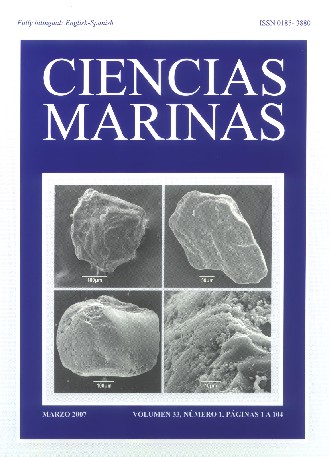Nearshore surface temperatures in Antofagasta Bay (Chile) and adjacent upwelling centers
Main Article Content
Abstract
Several years of sea surface temperature data (1997–2003) for the coast of Antofagasta Bay—a semi-enclosed bay in northern Chile—were analyzed in order to further exploring the nature of a warm-water retention pattern inside the bay. Based on time series techniques, we were able to confirm the persistence of warm water in the bay. This warm feature was found immediately downwind of the upwelling center at Jorgillo Point, where temperatures averaged 2–3ºC more than at the exposed upwelling sites outside and the bay. Temporal and spatial patterns in sea surface temperature were determined and showed being well associated with wind variability, indicated by the significant correlation between the first empirical orthogonal function modes of temperature variability and wind forcing. We discuss how the persistence of this warm feature and the thermal gradients or frontal structures associated with it are likely to play an important role in retaining larvae or other planktonic organisms in the bay.
Downloads
Article Details
This is an open access article distributed under a Creative Commons Attribution 4.0 License, which allows you to share and adapt the work, as long as you give appropriate credit to the original author(s) and the source, provide a link to the Creative Commons license, and indicate if changes were made. Figures, tables and other elements in the article are included in the article’s CC BY 4.0 license, unless otherwise indicated. The journal title is protected by copyrights and not subject to this license. Full license deed can be viewed here.

